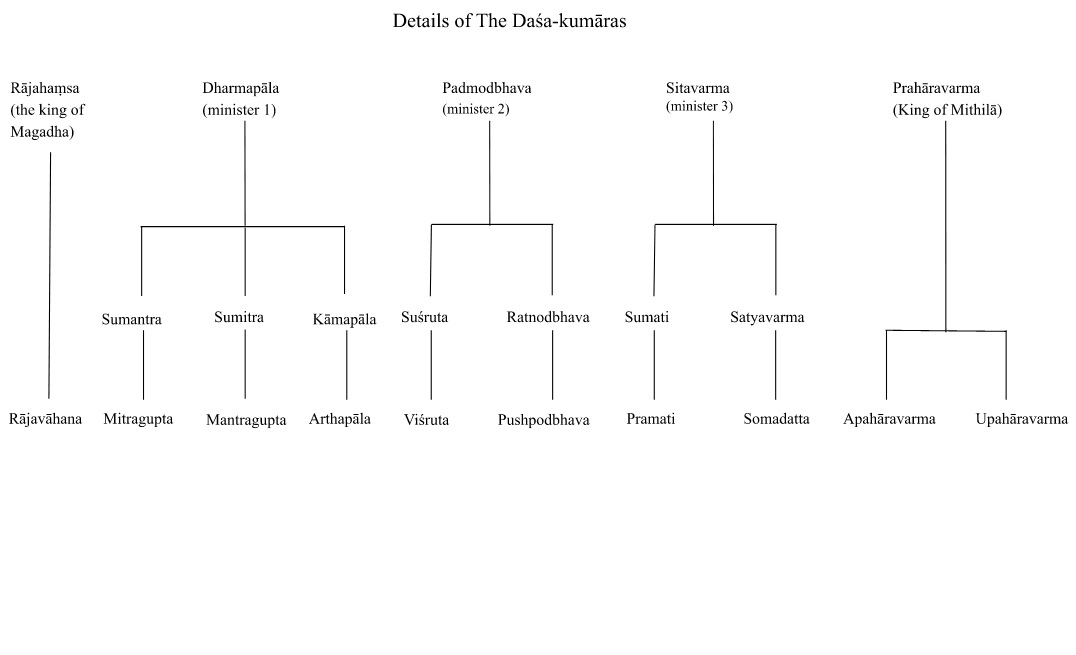Literature
ಸೀಸಪದ್ಯ ಮತ್ತು ಸಾನೆಟ್: ಪದ್ಯಶಿಲ್ಪವಿವೇಚನೆ - 4
ಕನ್ನಡದಲ್ಲಿ ಸೀಸಪದ್ಯದ ಬೆಳೆವಣಿಗೆ
ಕನ್ನಡದಲ್ಲಿ ಸಾನೆಟ್ಟಿಗೆ ಸಂವಾದಿಯಾಗಿ ಸೀಸಪದ್ಯವನ್ನು ಬಳಸಿದ ನವೋದಯದ ಕೆಲವೊಂದು ಮಾದರಿಗಳನ್ನು ಪರಿಶೀಲಿಸಬಹುದು. ಈ ಪದ್ಯಗಳು ನಿರಪವಾದವಾಗಿ ಮಾತ್ರಾಜಾತಿಯ ವರ್ಗದವು. ಇಲ್ಲಿಯ ಎತ್ತುಗೀತಿಗಳು ಆಟವೆಲದಿ ಮತ್ತು ತೇಟಗೀತಿ ಎಂಬ ಬಂಧಗಳಿಗೆ ಸಂವಾದಿಯಾಗದೆ ಪಂಚಮಾತ್ರಾಚೌಪದಿಗಳೇ ಆಗಿರುವುದು ಗಮನಾರ್ಹ.
ತಾಮಸಾವೃತರಾಗಿ ನಿಜಜನರ್ ನಿದ್ರಿಸಿರ-
ಲವರನೆಳ್ಚರಿಸಿದಾ ಧೀರನಾರು?
ದೇಶೀಯರಾತ್ಮಗೌರವವ ಮರೆತಿರಲಂದು
Kathāmṛta - 125 - The Story of the Daśa-kumāra-carita
Apahāravarmā declared that the bag would fulfil people’s wishes only when everything that has been snatched away was returned to its owners. He made sure that Kāmamañjarī gave back her belongings to her patrons. Dhanamitra complained to the king that his enchanted bag was stolen by someone and was given to Kāmamañjarī. She, in turn, transferred the blame to Arthapati and the king banished him from the kingdom.
Sandarbhasūkti - part 4
17. Asañjātavirodha-nyāya
Interpretation should happen in such a way that there is no room for inconsistencies. Even in treatises which are honest there might be statements which contradict each other. If that happens one of them should be slightly modified to remove such inconsistency. The important premise should drive the secondary premise in this case.
ಸೀಸಪದ್ಯ ಮತ್ತು ಸಾನೆಟ್: ಪದ್ಯಶಿಲ್ಪವಿವೇಚನೆ - 3
ರಾಕೇಂದುಬಿಂಬಮೈ ರವಿಬಿಂಬಮೈ ಯೊಪ್ಪ
ನೀರಜಾತೇಕ್ಷಣ ನೆಮ್ಮೊಗಂಬು
ಕಂದರ್ಪಕೇತುವೈ ಘನಧೂಮಕೇತುವೈ
ಯಲರು ಬೂಬೋಡಿಚೇಲಾಂಚಲಮ್ಮು |
ಭಾವಜು ಪರಿಧಿಯೈ ಪ್ರಳಯಾರ್ಕು ಪರಿಧಿಯೈ
ಮೆರಯುನಾಕೃಷ್ಟಮೈ ಮೊಲತ ಚಾಪ-
ಮಮೃತಪ್ರವಾಹಮೈ ಯನಲಸಂದೋಹಮೈ
Sandarbhasūkti - part 3
9. Ardhajaratīya-nyāya
Kathāmṛta - 124 - The Story of the Daśa-kumāra-carita
Chapter 4. The story of Puṣpodbhava
ಸೀಸಪದ್ಯ ಮತ್ತು ಸಾನೆಟ್: ಪದ್ಯಶಿಲ್ಪವಿವೇಚನೆ - 2
ತೆಲುಗಿನಲ್ಲಿ ಸೀಸಪದ್ಯದ ಬೆಳೆವಣಿಗೆ
ಸಾನೆಟ್ಟಿಗೆ ಸಂವಾದಿಯಾಗುವಂತೆ ಕಾಣುವ ಸೀಸಪದ್ಯದ ಈ ಗುಣ ನಮ್ಮವರ ರೂಪಣವೇನಲ್ಲ. ಸಾವಿರ ವರ್ಷಗಳಿಗೂ ಮುನ್ನವೇ ತೆಲುಗಿನಲ್ಲಿ ಆ ಬಂಧಕ್ಕೆ ಇಂಥ ಕಟ್ಟಡ ಒದಗಿತ್ತು. ಇದಕ್ಕೆ ನನ್ನಯ, ತಿಕ್ಕನ ಮುಂತಾದ ಮಹಾಕವಿಗಳ ರಚನೆಗಳೇ ಸಾಕ್ಷಿ:
ಧರ್ಮತತ್ತ್ವಜ್ಞುಲು ಧರ್ಮಶಾಸ್ತ್ರಂಬನಿ
ಯಧ್ಯಾತ್ಮವಿದುಲು ವೇದಾಂತಮನಿಯು
ನೀತಿವಿಚಕ್ಷಣುಲ್ ನೀತಿಶಾಸ್ತ್ರಂಬನಿ
Kathāmṛta - 123 - The Story of the Daśa-kumāra-carita
Chapter 1
Sandarbhasūkti - part 2
Nyāyas
1.Agniśikhā-nyāya
The flames of fire always go up. With the breeze it might tilt slightly but still goes upwards. Whether someone is good or bad, if he doesn’t change his conduct and is consistent, this nyāya can be used to describe that person. Also people who keep achieving higher and higher positions, who encounter only rise but never fall, this can be used to describe them too.

